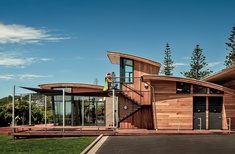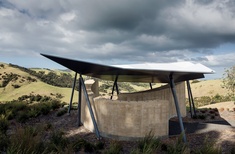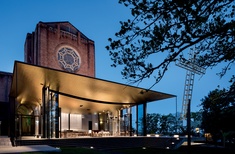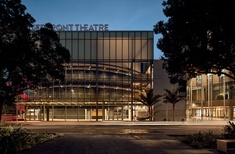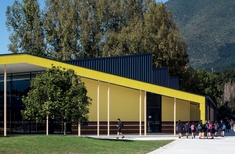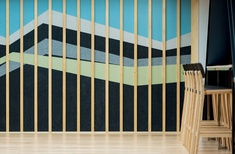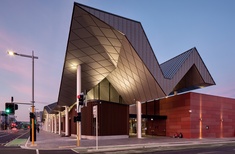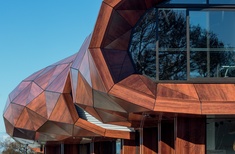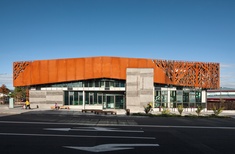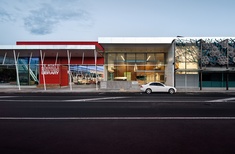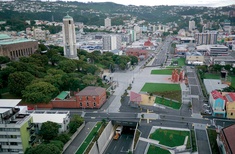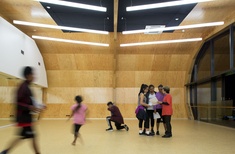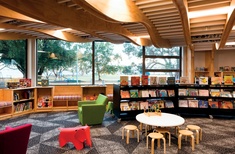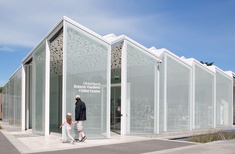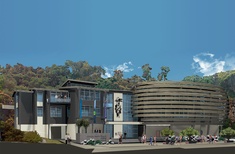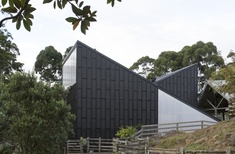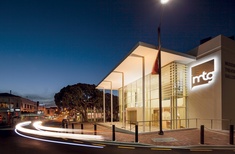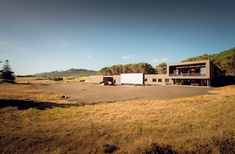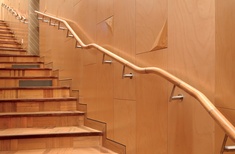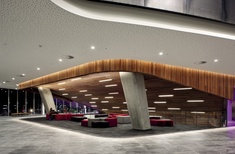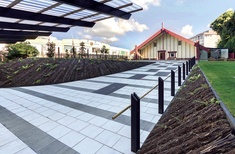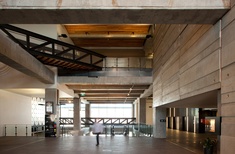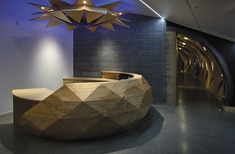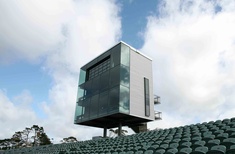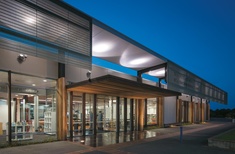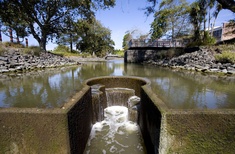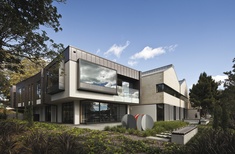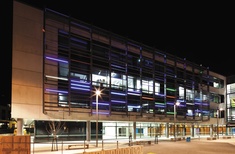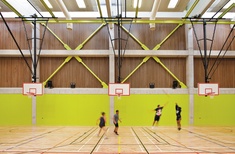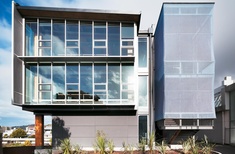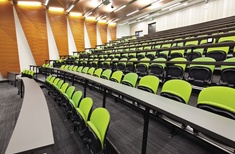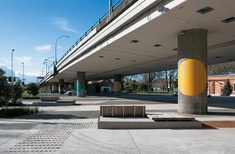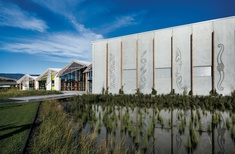Projects
RSSA new surf club, designed by Wilson & Hill Architects, sits both confidently and modestly on the golden sands of Sumner Beach.
From a sculptural visitor centre to a sophisticated theatre, these are ArchitectureNow’s top five civic spaces of 2016.
Fearon Hay Architects’ design for a chapel at the Holy Trinity Cathedral in Parnell is an elegant and delightful sacred space.
A new theatre complex in the heart of Auckland’s Wynyard Quarter is a vibrant hive-like complex.
RTA Studio Architects’ bold and innovative design has supported the transformation of a troubled school in the Bay of Plenty.
Nine government agencies – and their respective interior identities – are comfortably housed together.
Christchurch’s first civic building to be designed since the earthquakes is a bold and innovative bus station by Architectus.
Brightly coloured and multifunctional, this building serves as the community services centre for a small Canterbury town.
With its roots in Pacific culture, Archimedia’s new community centre has been likened to “a giant musical instrument”.
Jasmax has involved the community in the form and functions of its design for a library in Rānui, West Auckland.
Moller Architects’ library and community centre features dynamic interior spaces and façade sunscreens.
Created to commemorate the 100th anniversary of the Gallipoli campaign, the first major battle for Anzac soldiers in WWI.
A vibrant home for the performing and visual arts takes its design cues from the community it serves.
Wellington’s much-loved, small stage has a renewed look and new lease of life.
A project by Athfield Architects pushes spatial and civic boundaries.
Patterson Associates has created a multifunctional building beside the Avon River in Christchurch’s Hagley Park.
This ‘craypot’ building is constructed entirely in timber and is the first in the world to use shear walls of CLT and LVL.
The intersecting anatomy of roof forms on a giraffe boudoir encourages the world’s tallest terrestrial mammals to copulate.
Opus Architecture has amalgamated a complex series of buildings from different eras on Napier’s 150-year-old museum site.
Muriwai’s new surf lifesaving clubhouse, designed by Jasmax, is set 300m back from its rapidly eroding coastline.
Reworking of this 20-year-old theatre has received rapturous applause from those that play there.
Interior visits the future of tertiary education at AUT University’s high-tech development.
Shigeru Ban’s design bases itself on a system of proportions derived from the original Christchurch Cathedral.
An intricate paving design and curving banks are referenced in the layout of the atea in front of Pipitea Marae’s wharenui.
Athfield Architects has succeeded in giving the building an open-hearted civility and a conscience.
Architecture as landscape is the principle that guided Warren and Mahoney’s Buddhist pagoda for a temple in Auckland.
Phil Smith designs a childcare centre that is literally embraced by the earth.
Copeland Associates Architects’ Tower at Auckland’s North Harbour Stadium may be “just a box but it’s a box done well”.
Irving Smith Jack Architects’ adaptive reuse of a former Briscoes retail box has given the abandoned building new life.
Tennent + Brown Architects’ community sports centre in Wellington deals with its harsh environs with aplomb.
A 141-metre back country suspension bridge is the longest of its kind to be built in New Zealand since 1926.
Reset Urban Design puts in place a number of intitiatives to turn Waiuku back to the river.
A well-organised backdrop for musical endeavour and vitality by Architectus.
Together with Daryl Jackson of Sydney, Jasmax has created a more connected and student-centred space.
Sport and higher learning move a little closer together at a University of Otago satellite campus by Warren and Mahoney.
A building designed by Ivan Mercep of JASMaD in the early ‘80s has been seamlessly refurbished by RTA Studio.
There has been a clearing of the decks in this building that is opening new doorways.
Tommy Honey outlines the major capital works programme at the University and reviews its latest wave of buildings.
Boffa Miskell ventures under the bridge and works up a public plaza in a tricky position.
Tennent + Brown Architects have realised the metaphorical essence of Te Whare Tapa Wha.

